"We're up against not only imported berries, but also their price points, which are difficult to compete with on the domestic market. In response, we, Norwegian growers have organized a collaborative, legal cartel of berry farmers. This alliance allows us to meet weekly, assessing supply and setting fair prices that safeguard local growers from extreme price drops. We need to agree on these prices and avoid undercutting each other. Our aim isn't to drive competition but to ensure that our margins remain sustainable," says Simen Myhrene, CEO of Ekeberg Myhrene, a Norwegian tunnel producer of various berry varieties.
For many Norwegian berry growers, staying competitive in a market dominated by cheap imports and increasing regulatory demands is a constant challenge. Ekeberg x Myhrene, a joint venture between Ekersberg and Myhrene, has long focused on producing local, premium berries. Yet, as they put it, competing with low-cost imported berries isn't easy.
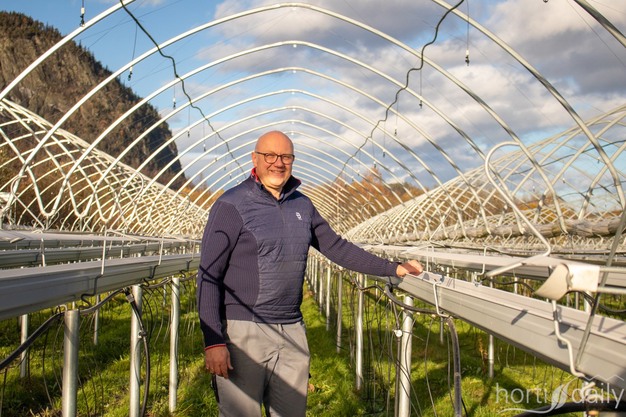 Simen Myhrene
Simen Myhrene
Navigating costs in tunnel production
Ekeberg Myhrene currently operates 11 hectares of tabletop strawberry production and an additional 4 hectares through their partnership with Fosser bær AS. Although Simen is subject to seasons using tunnels, transitioning to more advanced greenhouses stays costly. "Deploying tunnel farming for decades, the Norwegian climate served us its challenges like late frost e.g., which we could overcome with periodic heating. Yet, greenhouses would help us to extend the season, but it would mean substantial upfront investment," Simen explains. Myhrene is holding it in consideration for future production.
Simen's operation, which grows everbearing strawberry varieties, aims to provide consistent quality throughout Norway's short growing season, from late June to September. Despite the 'semi-controlled environment of tunnels', Norwegian berries face competition from cheaper varieties grown abroad. However, this hasn't caused any discouragement for the berry grower, as he remains confident that the market favors his produce: "Norwegians prefer the taste of local strawberries over imports. Traditional Norwegian berries are unique and far more flavorful, even though they have a shorter shelf life."
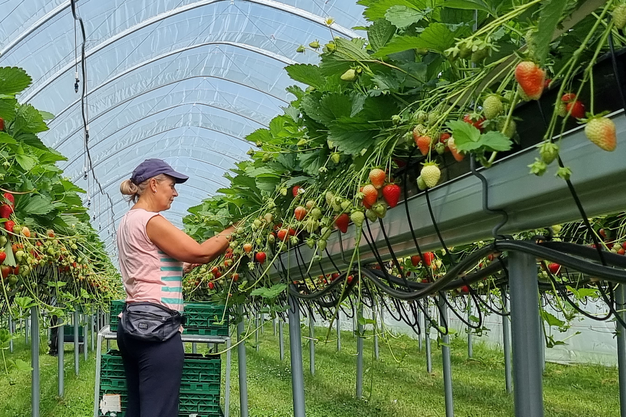
Energy costs and political tension
Beyond production, rising energy costs are a constant hurdle. "The energy situation here is complex, with the price of electricity rising significantly since the early 2000s," says Simen. While Norwegian hydropower was once affordable, recent price increases tied to the EU grid have impacted energy costs tremendously. Fortunately, agriculture as a whole is receiving subsidies to keep energy prices manageable, though Simen notes, "There's still a chance that prices will rise again after 2025. For now, these subsidies help growers balance costs, allowing us to keep up with price shifts without drastically impacting production."
On top of energy, political dynamics also play a big role in this. Norway's hydropower system now supplies not only local energy but also exports electricity to the EU, which at times increases domestic costs. "It's essentially a political balancing act. While energy prices are capped for us as farmers, future fluctuations are a concern, especially as we consider expanding to glasshouse production."
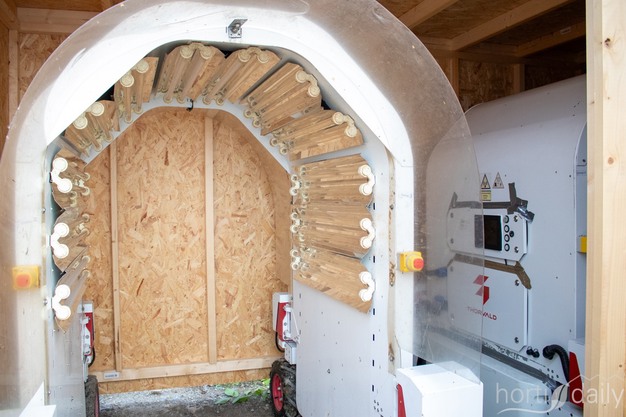 The UV-C robot used to treat mildew
The UV-C robot used to treat mildew
Driving efficiency
To combat labor challenges, Myhrene has invested in UV-C light robots to treat plants for pests like mildew, reducing the need for pesticides, on a software-as-a-service basis, given it's otherwise too costly to purchase such technology. "These robots run at night, treating plants with UV light to prevent mildew. It's an efficient method for pest management that doesn't rely on chemicals."
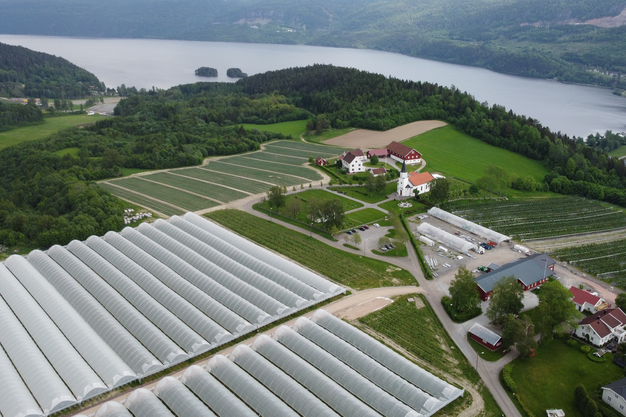 Myhrene's property from above
Myhrene's property from above
Yet, not everything can be easily automated. Labor, for instance, remains a complicated issue in Norway's high-cost market. "We rely heavily on seasonal workers, many from Poland and other European countries, whose wages are comparable to those of local Norwegian labor." Simen points out that the company also turned to tabletop systems to mitigate high labor costs, which improve picking efficiency. "With tabletops, we've cut picking costs by half and increased picking speed significantly, our workers can easily harvest 20-25 kilos per hour versus the usual 12-14," he says.
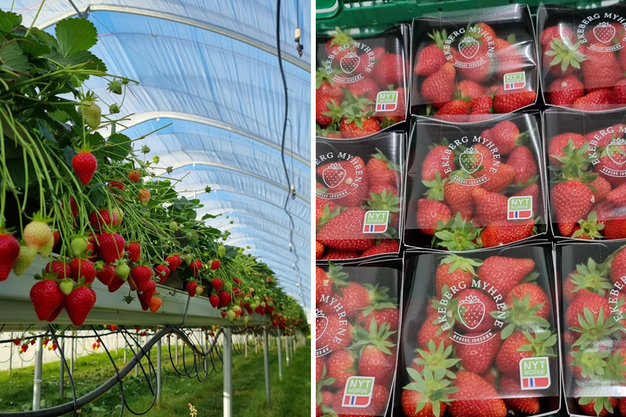
Norway's market pressure
Like other domestic producers, Ekeberg Myhrene operates in a fragile balance with Norwegian supermarket giants, particularly Bama, which controls the majority of the fresh produce market. "Bama has 70% of the market share, and while they provide stability, they also have considerable influence," Simen explains. "We have to negotiate prices carefully each year to avoid an over-reliance on imported berries that could lower our market value."
Alongside labor and pricing issues, weather unpredictability continues to impact yields, especially as climate change brings wetter summers. This has led the growers to explore and develop more resilient varieties, like the Flevoberry which performs well under these conditions. Each year, the firm is testing new varieties, and as Simen says, "We need berries that can withstand the wet conditions we've been seeing, which is essential for a short, yet profitable harvest season."
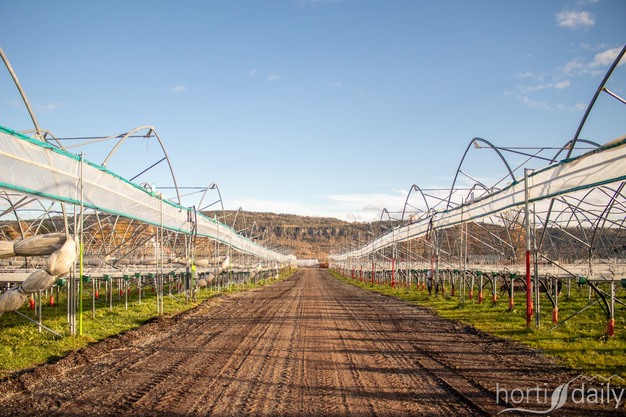 The plot of Myhrene
The plot of Myhrene
The way forward
Despite strawberries remaining profitable, Simen points out, "fluctuating costs and tight regulations continue to challenge domestic growers." Therefore, Myhrene is exploring potential partnerships to integrate more sustainable cultivation methods. In collaboration with Columbi Farms, an aquaponic initiative, they aim to use fish waste as fertilizer, creating a closed-loop system that could bring long-term environmental benefits. "We're looking at a system to recycle nutrients from fish farming and channel them into our strawberry production. It's still in the experimental stages, but the potential is huge for improving sustainability."
Despite Simen's various challenges at the moment like any other grower, he remains optimistic. "We're doing all we can to preserve the quality of our berries and the viability of local production. It's tough, but Norwegian growers are committed to innovating, adapting, and ensuring that our local strawberries remain a staple on store shelves. The journey isn't easy, but it's essential."
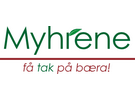
For more information:
Myhrene
Simen Myhrene, Owner
[email protected]
www.myhrene.no
